Intestinal CD103+ dendritic cells are key players in the innate immune control of Cryptosporidium parvum infection in neonatal mice
- PMID: 24367259
- PMCID: PMC3868524
- DOI: 10.1371/journal.ppat.1003801
Intestinal CD103+ dendritic cells are key players in the innate immune control of Cryptosporidium parvum infection in neonatal mice
Abstract
Cryptosporidium parvum is a zoonotic protozoan parasite found worldwide, that develops only in the gastrointestinal epithelium and causes profuse diarrhea. Using a mouse model of C. parvum infection, we demonstrated by conditional depletion of CD11c+ cells that these cells are essential for the control of the infection both in neonates and adults. Neonates are highly susceptible to C. parvum but the infection is self-limited, whereas adults are resistant unless immunocompromised. We investigated the contribution of DC to the age-dependent susceptibility to infection. We found that neonates presented a marked deficit in intestinal CD103+ DC during the first weeks of life, before weaning, due to weak production of chemokines by neonatal intestinal epithelial cells (IEC). Increasing the number of intestinal CD103+ DC in neonates by administering FLT3-L significantly reduced susceptibility to the infection. During infections in neonates, the clearance of the parasite was preceded by a rapid recruitment of CD103+ DC mediated by CXCR3-binding chemokines produced by IEC in response to IFNγ. In addition to this key role in CD103+ DC recruitment, IFNγ is known to inhibit intracellular parasite development. We demonstrated that during neonatal infection CD103+ DC produce IL-12 and IFNγ in the lamina propria and the draining lymph nodes. Thus, CD103+DC are key players in the innate immune control of C. parvum infection in the intestinal epithelium. The relative paucity of CD103+ DC in the neonatal intestine contributes to the high susceptibility to intestinal infection.
Conflict of interest statement
The authors have declared that no competing interests exist.
Figures

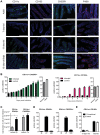


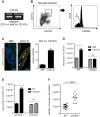
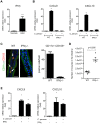
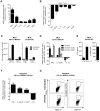
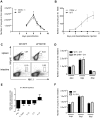
Similar articles
-
Batf3-Dependent Intestinal Dendritic Cells Play a Critical Role in the Control of Cryptosporidium parvum Infection.J Infect Dis. 2019 Feb 23;219(6):925-935. doi: 10.1093/infdis/jiy528. J Infect Dis. 2019. PMID: 30203075
-
Involvement of intestinal epithelial cells in dendritic cell recruitment during C. parvum infection.Microbes Infect. 2007 Apr;9(5):574-82. doi: 10.1016/j.micinf.2007.01.026. Epub 2007 Feb 20. Microbes Infect. 2007. PMID: 17395519
-
Characterization of intestinal mononuclear phagocyte subsets in young ruminants at homeostasis and during Cryptosporidium parvum infection.Front Immunol. 2024 May 2;15:1379798. doi: 10.3389/fimmu.2024.1379798. eCollection 2024. Front Immunol. 2024. PMID: 38756777 Free PMC article.
-
Cryptosporidium and host resistance: historical perspective and some novel approaches.Anim Health Res Rev. 2003 Jun;4(1):53-62. doi: 10.1079/ahrr200352. Anim Health Res Rev. 2003. PMID: 12885209 Review.
-
Innate immune responses against Cryptosporidium parvum infection.Parasite Immunol. 2013 Feb;35(2):55-64. doi: 10.1111/pim.12020. Parasite Immunol. 2013. PMID: 23173616 Review.
Cited by
-
A genetic screen identifies a protective type III interferon response to Cryptosporidium that requires TLR3 dependent recognition.PLoS Pathog. 2022 May 18;18(5):e1010003. doi: 10.1371/journal.ppat.1010003. eCollection 2022 May. PLoS Pathog. 2022. PMID: 35584177 Free PMC article.
-
Bovine cryptosporidiosis: impact, host-parasite interaction and control strategies.Vet Res. 2017 Aug 11;48(1):42. doi: 10.1186/s13567-017-0447-0. Vet Res. 2017. PMID: 28800747 Free PMC article. Review.
-
The Mucosal Innate Immune Response to Cryptosporidium parvum, a Global One Health Issue.Front Cell Infect Microbiol. 2021 May 25;11:689401. doi: 10.3389/fcimb.2021.689401. eCollection 2021. Front Cell Infect Microbiol. 2021. PMID: 34113580 Free PMC article. Review.
-
CpG Oligodeoxynucleotides Facilitate Delivery of Whole Inactivated H9N2 Influenza Virus via Transepithelial Dendrites of Dendritic Cells in Nasal Mucosa.J Virol. 2015 Jun;89(11):5904-18. doi: 10.1128/JVI.00296-15. Epub 2015 Mar 25. J Virol. 2015. PMID: 25810544 Free PMC article.
-
Early immune and host cell responses to Cryptosporidium infection.Front Parasitol. 2023;2:1113950. doi: 10.3389/fpara.2023.1113950. Epub 2023 Jan 27. Front Parasitol. 2023. PMID: 37325809 Free PMC article.
References
-
- Chen XM, Keithly JS, Paya CV, LaRusso NF (2002) Cryptosporidiosis. N Engl J Med 346: 1723–1731. - PubMed
-
- Adkins B, Leclerc C, Marshall-Clarke S (2004) Neonatal adaptive immunity comes of age. Nat Rev Immunol 4: 553–564. - PubMed
-
- Renz H, Brandtzaeg P, Hornef M (2012) The impact of perinatal immune development on mucosal homeostasis and chronic inflammation. Nat Rev Immunol 12: 9–23. - PubMed
Publication types
MeSH terms
Substances
LinkOut - more resources
Full Text Sources
Other Literature Sources
Medical
Molecular Biology Databases
Research Materials
Miscellaneous

